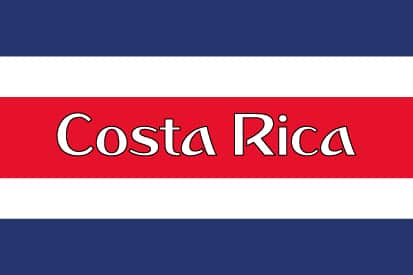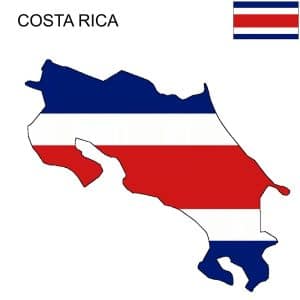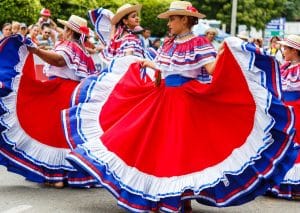Headlines
Costa Rica Population, Official Language And More.

Modern era: Costa Rica has been a stable and democratic country since 1949, when it adopted its current constitution. It has had peaceful transitions of power and free elections. It has also developed its economy, based on agriculture, tourism, and technology. It has invested in education, health care, and social welfare. It has also been a leader in environmental conservation, protecting its biodiversity and natural resources. It has maintained a neutral and pacifist foreign policy, avoiding conflicts and promoting human rights.

Costa Rica

Costa Rica
The Population
Costa Rica has a population of about 5.1 million people, according to the latest census in 2020.
The majority of the population is of mixed European and Native American descent, known as mestizos, followed by whites, blacks, Asians, and indigenous groups.
The population is mostly concentrated in the Central Valley, where the capital city of San Jose and other major urban centers are located.
The population growth rate is low, at 0.9% per year, due to low fertility and high emigration rates.
The Landmarks
Costa Rica has many natural and cultural landmarks that attract tourists and locals alike. Some of the most famous ones are:
The Arenal Volcano, an active stratovolcano that offers stunning views and hot springs.
The Monteverde Cloud Forest Reserve, a biodiverse ecosystem that hosts hundreds of species of birds, mammals, reptiles, amphibians, and plants.
The Manuel Antonio National Park, a coastal park that combines beaches, forests, and wildlife.
The National Theatre of Costa Rica, a neoclassical building that showcases the country’s artistic and historical heritage.
The Pre-Columbian Gold Museum, a museum that displays the ancient gold artifacts and crafts of the indigenous peoples of Costa Rica.
The Official Language
The official language of Costa Rica is Spanish, which has been spoken since the Spanish colonization in the 16th century.
The variety of Spanish spoken in Costa Rica is called Costa Rican Spanish, which is a form of Central American Spanish with some distinctive features.
Some of the features of Costa Rican Spanish are:
The use of the second-person singular pronoun vos instead of tú for informal address.
The use of the suffix -tico instead of -ito for diminutives, such as gatito (little cat) becoming gatitico.
The use of the interjection pura vida (pure life) as a greeting, farewell, or expression of happiness or satisfaction.
There are also five indigenous languages spoken in Costa Rica by some native groups, such as Bribrí, Cabécar, Maleku, Buglere, and Guaymí.
The Culture
Costa Rican culture is a vibrant blend of indigenous heritage and Spanish colonial influence, with a dash of Jamaican, Chinese, and other immigrant cultures lending character and customs.
The result is a nation of laid-back, friendly, and happy people who value peace, democracy, and human rights.
Some of the aspects of Costa Rican culture are:
The cuisine, which is based on rice, beans, corn, meat, fruits, and vegetables. Some typical dishes are gallo pinto (rice and beans), casado (mixed plate), arroz con pollo (rice with chicken), and ceviche (raw fish marinated in lime juice).
The music, which is influenced by various genres such as calypso, reggae, salsa, merengue, cumbia, and folk. Some traditional instruments are the marimba (xylophone), the quijongo (bow harp), and the ocarina (clay flute).
The festivals, which celebrate religious or historical events with parades, dances, costumes, and fireworks. Some popular festivals are Christmas (Dec 25), New Year’s Eve (Dec 31), Palmares Fiestas (Jan), Limon Carnival (Oct), and Independence Day (Sep 15).
The Economic Stability
Costa Rica has been very stable economically for some years now, with continuing growth in the GDP (Gross Domestic Product) and moderate inflation, though with a high unemployment rate: 11.49% in 2019.
Costa Rica’s economy emerged from recession in 1997 and has shown strong aggregate growth since then, based on agriculture, tourism, and technology sectors.
Costa Rica has also reduced poverty from 40% to below 20% of the population in the past two decades, thanks to its investment in education, health care, and social welfare programs.
Costa Rica has also been a leader in environmental conservation, protecting its biodiversity and natural resources, and aiming to become carbon neutral by 2050.
Costa Rica has maintained a neutral and pack.
The GDP of Costa Rica is estimated to be US$78 billion in 2023, which is a significant increase from US$52.6 billion in 2015. The GDP per capita (purchasing power parity) is estimated to be US$26,422 in 2023.
The currency of Costa Rica is the Costa Rican colón (CRC), but US dollars are also widely used and accepted. One euro is equal to 571.07 CRC as of today. The colón is divided into 100 céntimos and features colorful bills with animals such as sharks, monkeys, sloths and butterflies.
The food of Costa Rica is diverse and flavorful, influenced by indigenous, Spanish, African and Caribbean cuisines. Some of the most popular dishes are:
Casado: a typical meal consisting of rice, beans, salad, plantains, meat or fish and sometimes cheese or eggs.
Ceviche: a dish of raw fish marinated in citrus juices with herbs and vegetables.
Gallo Pinto: a breakfast dish of rice and beans mixed with onions, peppers and cilantro.
Olla de Carne: a hearty soup of beef, potatoes, carrots, corn, yuca and other vegetables.
Sopa de Mariscos: a seafood soup with shrimp, fish, clams, mussels and coconut milk.
Arroz con Camarones: rice with shrimp cooked in a tomato sauce with garlic, onion and peppers.
Arroz con Mariscos: rice with mixed seafood cooked in a similar way as arroz con camarones.
Tamales: corn dough filled with meat, cheese, vegetables or fruits and wrapped in banana leaves.
The major cities of Costa Rica are:
San José: the capital and largest city, with a population of about 340,000. It is the cultural, political and economic center of the country, as well as a hub for transportation, education and tourism.
Alajuela: the second-largest city, with a population of about 280,000. It is located near the Juan Santamaría International Airport and is known for its agricultural production, especially coffee and sugar cane.
Cartago: the third-largest city, with a population of about 160,000. It was the first capital of Costa Rica and is home to the Basilica of Our Lady of the Angels, a popular pilgrimage site.
Heredia: the fourth-largest city, with a population of about 150,000. It is located in the Central Valley and is known for its colonial architecture, universities and coffee plantations.
Limón: the fifth-largest city, with a population of about 100,000. It is located on the Caribbean coast and is the main port and commercial center of the region. It has a strong Afro-Caribbean influence and culture.
The major airport of Costa Rica is the Juan Santamaría International Airport (SJO), located in Alajuela, about 20 km from San José. It is the busiest and most important airport in the country, serving both domestic and international flights. It has two terminals, one for international flights and one for domestic flights.
The major sea port of Costa Rica is the Puerto Limón, located in Limón, on the Caribbean coast. It is the largest and oldest port in the country, handling about 80% of the country’s maritime trade. It exports mainly bananas, coffee, pineapple and sugar cane, and imports mainly petroleum products, machinery and consumer goods.
The major schools of Costa Rica are:
Universidad de Costa Rica (UCR): the oldest and largest public university in the country, founded in 1940. It has campuses in San José, Alajuela, Cartago, Heredia and Limón. It offers programs in arts, sciences, engineering, medicine, law, education and more.
Instituto Tecnológico de Costa Rica (ITCR): the leading public university for science and technology in the country, founded in 1971. It has campuses in Cartago, San José, Alajuela and Limón. It offers programs in engineering, computer science, biotechnology, architecture and more.
Universidad Nacional de Costa Rica (UNA): the second-largest public university in the country, founded in 1973. It has campuses in Heredia, Alajuela, San José and Limón. It offers programs in humanities, social sciences, natural sciences, health sciences and more.





